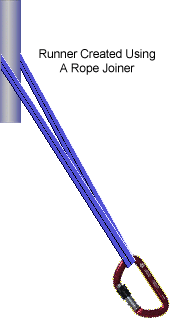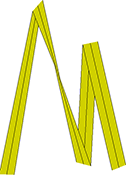
This also applies to cable, chain, and webbing.
Gear that is anchored includes anchors, rocks, trees, tripods, trucks, etc.
A "bight" is a simple loop in a rope that does not cross itself.
A "bend" is a knot that joins two ropes together. Bends can only be attached to the end of a rope.
A "hitch" is a type of knot that must be tied around another object.
"Descending devices" (e.g., ATCs, Brake Bar Racks, Figure 8s, Rescue 8s, etc) create friction as their primary purpose. The friction in descending devices is always considered when calculating forces.
The "Safety Factor" is the ratio between the gear's breaking strength and the maximum load applied to the gear (e.g., 5:1).
"Rope joiners" allow you to invisibly connect two rope ends.
To use a rope joiner, first add a rope joiner to the workspace and then drag-and-drop the ends of a chain, rope, or webbing onto the joiner. (After a joiner is connected to two rope ends, it will only appear when gear is selected.) You can right-click on a joiner to view its shortcut menu.

You can use a rope joiner to create a runner by connecting the ends of webbing.

When a rope jointer is connected to webbing, you can rotate the joiner to create, or remove, twists in the webbing. The following illustration was created using four pieces of webbing and four rope joiners. You can create a similar appearance using slack points.
